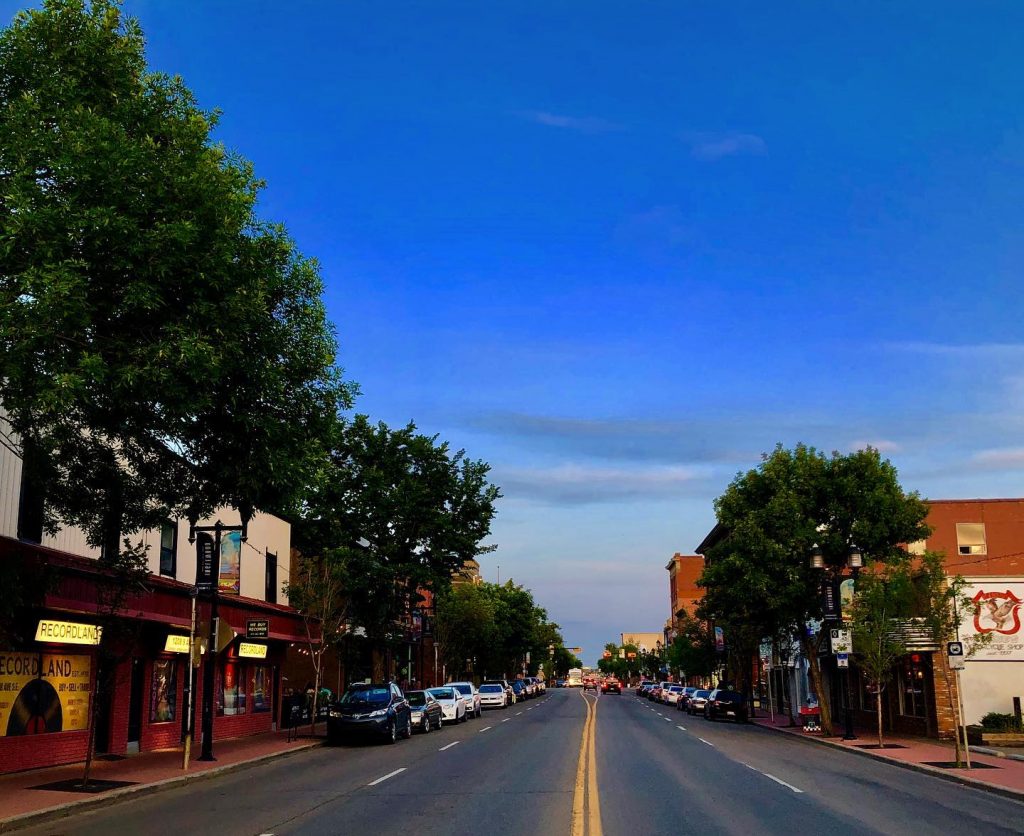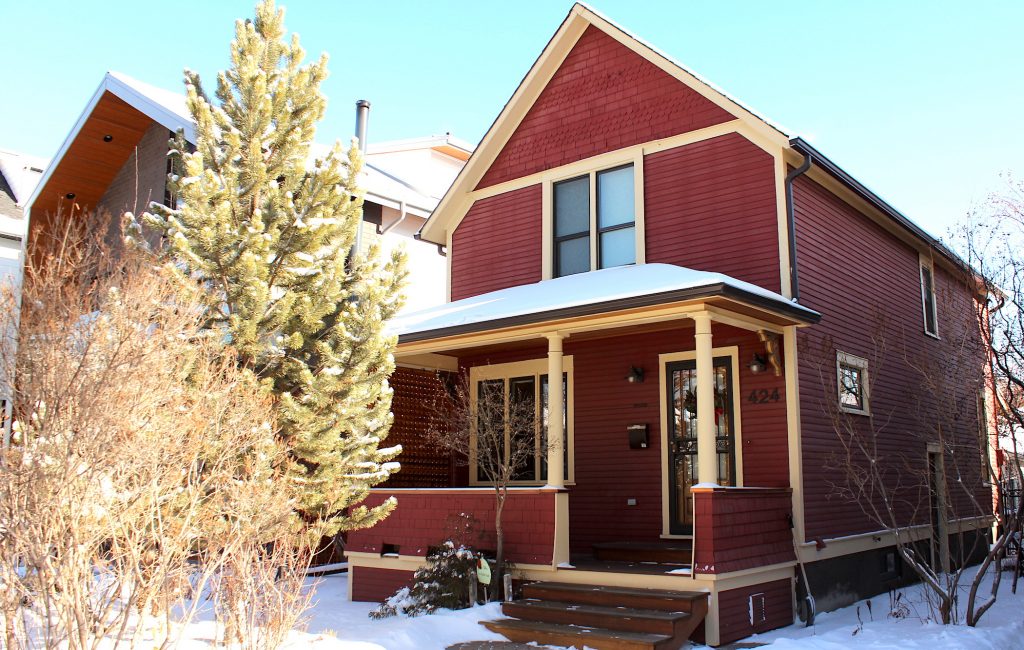Some of the words being used to describe Calgary’s proposed Guidebook for Great Communities are transformative, wholesale change and rapid change.
There are varying opinions on what this new growth guidebook means for Calgary and where it might fall short today.
But, for many of you, not familiar with the jargon of city planning, this will answer a few questions and… maybe create a few more.
What is this Guidebook for Great Communities anyway?
The 147-page proposed guide is a tool to shape future development in Calgary’s established neighbourhoods.
The guidebook, according to Lisa Kahn, coordinator for the legislations land use bylaw team at the City of Calgary, said there are three primary purposes for the document.
First, it’s to carry out Calgary’s Municipal Development Plan. That’s the city’s 60-year vision approved in 2009.
Next, it’s to be used to guide the new multi-community, Local Area Planning process that’s underway (in different stages) in three areas: North Hill, Westbrook and Heritage. It’s expected there will be roughly 40 of these plans grouping more than 150 Calgary communities.
“It’s about a 20-year vision for a plan. And the guidebook sets a common framework or common language for how those plans can be done,” said Kahn.
Lastly, is its use in carrying out development policies in future development applications in areas where the guidebook is applied.
There are four-sections to the guide, with 20 topic areas covering a wide range of planning and development areas.
It was first presented in September 2019 and has been rolled out to citizens in feedback and engagement sessions to both educate and inform.
Guidebook for Great Communities: Lost in Translation?

David White, principal with Civic Works, an urban design and planning consultancy that specializes in established areas development, said the guidebook has a lot of progressive planning principles in it.
It will all come down to interpretation, he said, and that poses a concern.
“I’ve said a number of times, who is the keeper of the interpretation of this new way of thinking about city building,” he said.
“I worry about its translation. Inherently, so much about land development is a political process and if people are unclear about meaning, I think that’s an unhealthy thing for outcomes, in my opinion.”
White wondered if it’s clear what the guidebook is trying to achieve.
He said the nuance is that you can’t complete a multi-community, local area plan without the guidebook, but if you don’t get the guidebook right, you won’t get the local area plan correct.
Kahn said the guidebook sets the course for local specific discussions and the development of a local area plan. With each multi-community area having different geographic, demographic and topographic features and with the vision of each community’s residents being different, how the guidebook is applied may look different.
“The guidebook might be differently applied in North Hill than it is in Westbrook than it is in Heritage. And we’re seeing that now,” she said.
“We’re seeing communities take that and customize that and really have those discussions about what is unique about those communities and how can we take that and work with that.”
White thinks it needs more time and refinement – for clarity’s sake.
“The multi-community plans are only going to be as good as the guidebook, and there’s the rub,” he said.
‘Very motherhood and apple pie’

Ali McMillan, planning director for the Bridgeland-Riverside Community Association said no one can really disagree with the principals in the guidebook. Though, it’s very broad strokes, she said.
“We feel the language is very motherhood and apple pie,” McMillan said.
“So, if I was a developer or resident of Bridgeland, and I went, ‘what’s going to happen on this lot, and what makes us special or unique,’ I’m not sure that we would get that out of the guidebook right now and that’s what people are looking for.”
Right now, McMillan sees a lot of room for interpretation.
“There’s a lot of room for discretion, which is a good thing for creativity to some degree, but not everybody comes in with something creative in a nice way,” McMillan said.
McMillan said the guidebook is going in before other rules are in place. Specifically, she’s referring to the city’s updated heritage policies and the Established Areas Growth and Change Strategy, which will help determine planning and infrastructure investments in older Calgary areas.
The guidebook goes to the city’s planning committee March 4, while the proposed new heritage policy goes to committee April 1. They’re both scheduled to go to council April 27.
The Established Areas Growth and Change Strategy doesn’t get to committee until May.
Heritage preservation

There are tools currently in place to address city heritage buildings, Kahn said. They’ve heard feedback on the heritage component of the guidebook after the initial release.
“One of the things we looked at really intently through our work last year was around heritage. And when we got to the point of trying to apply it in our field, we realized that the tool that we had created wasn’t the appropriate tool,” she said.
“So, we’ve actually gone back and we rethought it, make sure that when we actually apply it, it’ll work on the ground.”
With that said, this aspect of the document could take a different direction. That’s mainly because since this document is supposed to guide the development of a local area plan, Kahn said some neighbourhoods with heritage buildings aren’t going through the multi-community process.
“We want to make sure that when we do go out and apply these heritage tools that we’re doing them strategically and we’re encompassing everything and not waiting for a local area plan,” she said.
Coun. Gian-Carlo Carra, a strong proponent of the guidebook, said he believes a strong heritage component will emerge, but admitted it wasn’t well synced with the guidebook.
“Should there have been an embedded heritage function within the Guidebook for Great Communities? Absolutely,” Carra said.
“Will there be, when the smoke clears? Absolutely.”
Carra lays that at the feet of the city’s heritage preservation team, noting they’ve had four years “of permission, space and political thumbs up to deliver one of the most robust heritage preservation environments in North America.”
Funding great communities
McMillan was also concerned with funding for some of these plans for great communities – particularly related to density.
Though density targets aren’t specifically addressed in the guidebook, urban form is talked about at length. In many cases, to fit with the overriding municipal development goal of 50 per cent of growth in the inner city, it’s going to mean increased density in most neighbourhoods.
“How are we going to pay for the upgrades to the infrastructure that are required to add all this density? Bridgeland’s got some pretty old pipes under here,” McMillan said.
“Is there sufficient sewage and water infrastructure in place? We’re not sure.”
As it pertains to Transit-Oriented Development, McMillan said there’s got to be a funding plan to upgrade the station infrastructure in these areas as well. Also, she points out that the city’s MainStreets program doesn’t have ongoing funding.
Carra said the cash question is a legitimate fear. The Established Areas Growth and Change Strategy is supposed to be underpinned by a funding mechanism for the inner city, similar to the offsite levy for greenfield development.
The guidebook talks about current tools in place: density bonusing, development levies and the use of community funds and refers to potential changes reflecting a “long-term, sustainable financial policy” coming. Those new tools will be added. But, they aren’t there yet.
“The majority of people who supported investing in growth on the edge of the city also understand that we also have to invest in growth in the inner city as well,” Carra said.
“I don’t think there’s anyone who disagrees that density should come without amenity and we’re doing that work.”
The cost of increased density has shied some inner-city developers away from projects because of financial uncertainty.
But Kahn said the local area plan development, via the guidebook, doesn’t happen overnight. Neither does the actual realization of that plan.
“Part of what the local area plan process is, is identifying the things that need to happen as growth occurs. And that allows us to be strategic about how we fund it and when we fund it,” Kahn said.
Both Kahn and Carra pointed to the recent notice of motion by Coun. Jyoti Gondek to put $30 million of city investment earnings toward funding public realm improvements in these neighbourhoods.
More time needed for The Guidebook for Great Communities?
White said the current version of the guidebook needs work. He pointed out that neither the North Hill local area plan, nor the guidebook, have been approved by council.
“I think a lot of folks in industry, through the established growth and change strategy work, who are active participants, are concerned that maybe the guidebook needs more time and needs more work and refinement,” he said.
McMillan agreed. She also said most people in Calgary have no idea about the impact this will have on their communities. The stakeholder groups have already provided a great deal of feedback, she said.
“But even that, we’ve given a lot of feedback and a lot of questions. And I would say they’re not addressed yet, let alone the general public who has no clue this is happening,” McMillan said.
“It is a massive change. It’s completely changing the whole planning system in the city. And so, I think average citizens should probably be aware of that.”
Carra said felt as though those opposed to the guidebook don’t want the current system to change.
“There are many people at City Hall, I think, who would love to see this fail and get back to business as usual. And there are many people in the community who would like to see this all fail and get back to business as usual,” Carra said.
“But I don’t believe that business as usual is an option.”
He said he wants to iron out some of the challenges and work on how the guidebook can be better – not slow it down or pilot it.
Public information available at the Central Library
Kahn acknowledged the Guidebook for Great Communities is a so-called ‘living document.’ It would continue to evolve and grow along with the city and its neighbourhoods.
She said the guidebook has been tested through the North Hill Local Area Plan to see what some of the hurdles are to its application.
“We’ve been doing a ton of work to make sure that the guidebook that we’re proposing in March is reflective of what the needs of communities are,” Kahn said.
“We know that as we go through more of those processes, we’re going to learn more. And so part of that is making sure that we’re flexible and nimble to be able to update the guidebook if needed.”
One common misconception they’ve heard in the feedback is that this guidebook eliminates single-family dwellings. The guidebook doesn’t change any zoning on the ground. It doesn’t up the density or intensity.
Kahn encouraged more Calgarians to look at the information available.
Calgarians can check out the guidebook display at the Central Library. Kahn said they’ve tried to make the information as plain language as possible so citizens can wrap their heads around it.
Carra said city building takes time. So does changing it with such a large undertaking as the Guidebook for Great Communities.
“City building is iterative, right?” Carra said.
“It would be ideal if you could deliver everything crystalline and perfect at the exact same moment in time. The fact is that we’re getting to where we’re getting to, and we’re not there yet.”



